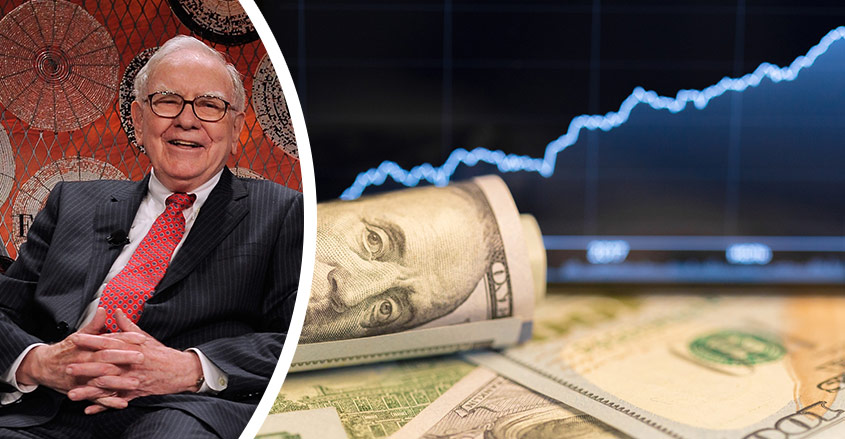Most financial gurus who predict a prosperous American future do so for one sector such as tech or one technology like crypto, but few believe that our future as a country will be as bright as our industrial past.
With the rise of China and political division at home, the United States is seen by many as increasingly a land of haves and have-nots, a place where inequality is hitting all-time highs.
Not Warren Buffett.
The Sage of Omaha, one of the most respected and popular of modern investors and the third-richest man on the planet, says that our best days are ahead of us. Buffet once again bucks the crowd and contends that the 21st century will be the greatest Americans ever lived through.
Speaking to Time, Buffett outlines an argument for why he believes annual GDP growth of 2% — far below the growth targeted by politicians — will “work wonders” for the American public over the long term.
“People don’t look at economic factors like government debt or consumer spending in a vacuum,” he said.
“Though there are a dozen key factors, the two keys ones are GDP growth and population growth.”
For example, 2% annual GDP growth should be alarming if population growth were to outpace it at 3%.
But the U.S. population will likely increase by about 0.8% annually, according to the birth and immigration rates. Thus in Buffett’s projection we can expect GDP per capita to increase by 1.2% annually.
“In 25 years — a single generation — 1.2% annual growth boosts our current $59,000 of GDP per capita to $79,000. This $20,000 increase guarantees a far better life for our children.”
Buffett, who was born in 1930, goes on to illustrate how virtually all modern Americans have access to luxuries — entertainment, medicine, education — that even the richest Americans didn’t have a century ago.
This massive increase in standard of living was the result of innovation and productivity that the world had never seen before and that was sustained for over 250 years, Buffett writes.
But it came at a cost.
“To all this good news there is, of course, an important offset: in our 241 years, the progress that I’ve described has disrupted and displaced almost all of our country’s labor force. If that level of upheaval had been foreseen — which it clearly wasn’t — strong worker opposition would surely have formed and possibly doomed innovation.
“How, Americans would have asked, could all these unemployed farmers find work? We are at a very similar inflection point in today’s economies with people asking what all the drivers or factory workers will do when replaced by automation.”
Disrupted
Rather than loss, Buffett argues that disruption itself is what allows standards of living to improve drastically over time.
“We know today that the staggering productivity gains in farming were a blessing. They freed nearly 80% of the nation’s workforce to redeploy their efforts into new industries that have changed our way of life.
“You can describe these developments as productivity gains or disruptions. Whatever the label, they explain why we now have our amazing $59,000 of GDP per capita.”
Still, disruptions in industry and labor have left large swaths of the American workforce in relative stagnation, Buffett admits.
“The market system, however, has also left many people hopelessly behind, particularly as it has become ever more specialized. These devastating side effects can be ameliorated: a rich family takes care of all its children, not just those with talents valued by the marketplace.
“In the years of growth that certainly lie ahead, I have no doubt that America can both deliver riches to many and a decent life to all. We must not settle for less.”
Hedge fund superstar Ray Dalio recently predicted that artificial intelligence will replace millions of workers, including white-collar doctors and lawyers.
It’s harder to imagine a doctor or lawyer being retrained vs. a farmer or truck driver. Still, Buffett has been around for a long time and his success speaks for itself.


